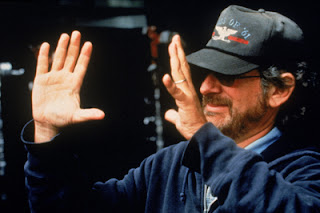To whom it may concern,
I am writing to you concerning your recent job advertisement for a digital video producer for your production team. Whilst reading you advertisement I noticed several issues where your advert has contractual, ethical and legal issues and even breaches of legislation.
The first issue with your advert is that you do not clearly state work hours and pay and their relation. You vaguely state that work hours would range from 10-45 hours per week and pay would range from £15,000-£35,000 however you have not stated how the work hours would relate to the pay which could be unfair if someone only worked 10 hours and received £35,000, or someone worked the full 45 hours may only receive £15,000 which is unfair. Near the end of your advertisement you note that "if successful, you must not apply of other positions of this nature" whilst there is nothing wrong with this line in this context, the official contract after employment would need to explicitly state that this is an Exclusivity cause.
Several times during your advert you've infringed The Equality Act (2010). Firstly you have stated that the applicant mus be below the age of 30, this is an infringement as it is discrimination on grounds of age. Secondly you specifically state that the applicant must follow the Christian religion and promote Christian views in the production, section 4 of Ofcom broadcasting codes state that a a religious programme (a programme that deals with matters of religion as a central or significant part) must not be used to for recruiting susceptible audiences. Also as the applicant is not an employee, certain codes and health and safety legislation that can be affected by this is that applicants will not be trained in dealing with vulnerable people such as the victims you wish to be interview. Also as the applicants are not employees they are not protected by trade unions such as BECTU.
There are also several other ethical issues with your advert including Codes of Practice which are written guidelines for workers and employees to follow. As an employer it is your responsible for setting these procedures, and making sure they are up to date with laws. This is also very important for the work you are advertising as you are asking an unregulated person to interact with vulnerable young people. Filming for the video would most likely also have to take place in prisons as you wish for offenders to be interviewed as well, once again this poses questions on what the Health & Safety would be during this time as applicants (not employees) would be in close proximity to potentially violent offenders. As well as this how you wish to represent the groups can be problematic, you stated that you wished for interview to be carried out with "female victims and male offenders". This is not only biased but can be seen as demonisation of males as you are heavily implying that only males can be rape offenders. This can then lead to social concerns and negatively impact the portrayal and image of the affected group.
As you have asked for high school students to be the target audience I must draw your attention to section 1 of the Ofcom broadcasting codes entitled Protecting Under-18's under the Communications Act (2003) and the Broadcasting Act (1990). This legislation as titled exists to protect young people from serious physical, mental or moral harm due to broadcasting by implementing whats known as a watershed, programmes aired before the watershed cannot breach the protecting under 18 broadcasting codes. The watershed time for the UK according to Ofcom applies to any content broadcast between 21.00 and 05.30. In regards to your video's content the codes that apply are that Violence and dangerous behaviour must be limited appropriately before the watershed this especially applies to imitable and harmful acts. As well as this your video would breach the area of codes surrounding Sex and Nudity which state no representations of sexual acts may be included before the watershed. The British Board of Film Classification (BBFC) are responsible for classifying media productions in the UK. Due to the subject and nature of your video the production would most likely be rated 18 due to the strong sexual violence you wish to include. This then is problematic for your video as your target audience is 11-16 year old children. Due to the nature of your video the lowest rating you would be granted would be a 15. A 15 rate film can include sexual activity, nudity and violence but cannot dwell on the infliction of injury, show or even reference strong, detailed sexual activity as well as not contain nudity with strong sexual detail. Due to these points you would need to rethink you target audience and the content you wish to include. Finally you ask that "a popular music soundtrack that would appeal to the target audience"should be included and that you would reimburse "up to the value of £20". The problems with this are that you cannot just include a song in your production due to copyright laws, as it is someone else's intellectual property, it can be possible to purchase the track with a commercial use license however this is likely to be more expensive than £20. This then leaves the options of using the song without licence or using "royalty free" music which is available free for commercial use. If someone was to use the song and breach copyright they would then be susceptible to legal action against them for theft of intellectual property. If someone was to use royalty free music however they may then be given less consideration from you as they have deviated from the application brief.
Yours Sincerely,
C. Huxtable
Several times during your advert you've infringed The Equality Act (2010). Firstly you have stated that the applicant mus be below the age of 30, this is an infringement as it is discrimination on grounds of age. Secondly you specifically state that the applicant must follow the Christian religion and promote Christian views in the production, section 4 of Ofcom broadcasting codes state that a a religious programme (a programme that deals with matters of religion as a central or significant part) must not be used to for recruiting susceptible audiences. Also as the applicant is not an employee, certain codes and health and safety legislation that can be affected by this is that applicants will not be trained in dealing with vulnerable people such as the victims you wish to be interview. Also as the applicants are not employees they are not protected by trade unions such as BECTU.
There are also several other ethical issues with your advert including Codes of Practice which are written guidelines for workers and employees to follow. As an employer it is your responsible for setting these procedures, and making sure they are up to date with laws. This is also very important for the work you are advertising as you are asking an unregulated person to interact with vulnerable young people. Filming for the video would most likely also have to take place in prisons as you wish for offenders to be interviewed as well, once again this poses questions on what the Health & Safety would be during this time as applicants (not employees) would be in close proximity to potentially violent offenders. As well as this how you wish to represent the groups can be problematic, you stated that you wished for interview to be carried out with "female victims and male offenders". This is not only biased but can be seen as demonisation of males as you are heavily implying that only males can be rape offenders. This can then lead to social concerns and negatively impact the portrayal and image of the affected group.
As you have asked for high school students to be the target audience I must draw your attention to section 1 of the Ofcom broadcasting codes entitled Protecting Under-18's under the Communications Act (2003) and the Broadcasting Act (1990). This legislation as titled exists to protect young people from serious physical, mental or moral harm due to broadcasting by implementing whats known as a watershed, programmes aired before the watershed cannot breach the protecting under 18 broadcasting codes. The watershed time for the UK according to Ofcom applies to any content broadcast between 21.00 and 05.30. In regards to your video's content the codes that apply are that Violence and dangerous behaviour must be limited appropriately before the watershed this especially applies to imitable and harmful acts. As well as this your video would breach the area of codes surrounding Sex and Nudity which state no representations of sexual acts may be included before the watershed. The British Board of Film Classification (BBFC) are responsible for classifying media productions in the UK. Due to the subject and nature of your video the production would most likely be rated 18 due to the strong sexual violence you wish to include. This then is problematic for your video as your target audience is 11-16 year old children. Due to the nature of your video the lowest rating you would be granted would be a 15. A 15 rate film can include sexual activity, nudity and violence but cannot dwell on the infliction of injury, show or even reference strong, detailed sexual activity as well as not contain nudity with strong sexual detail. Due to these points you would need to rethink you target audience and the content you wish to include. Finally you ask that "a popular music soundtrack that would appeal to the target audience"should be included and that you would reimburse "up to the value of £20". The problems with this are that you cannot just include a song in your production due to copyright laws, as it is someone else's intellectual property, it can be possible to purchase the track with a commercial use license however this is likely to be more expensive than £20. This then leaves the options of using the song without licence or using "royalty free" music which is available free for commercial use. If someone was to use the song and breach copyright they would then be susceptible to legal action against them for theft of intellectual property. If someone was to use royalty free music however they may then be given less consideration from you as they have deviated from the application brief.
Yours Sincerely,
C. Huxtable






























































